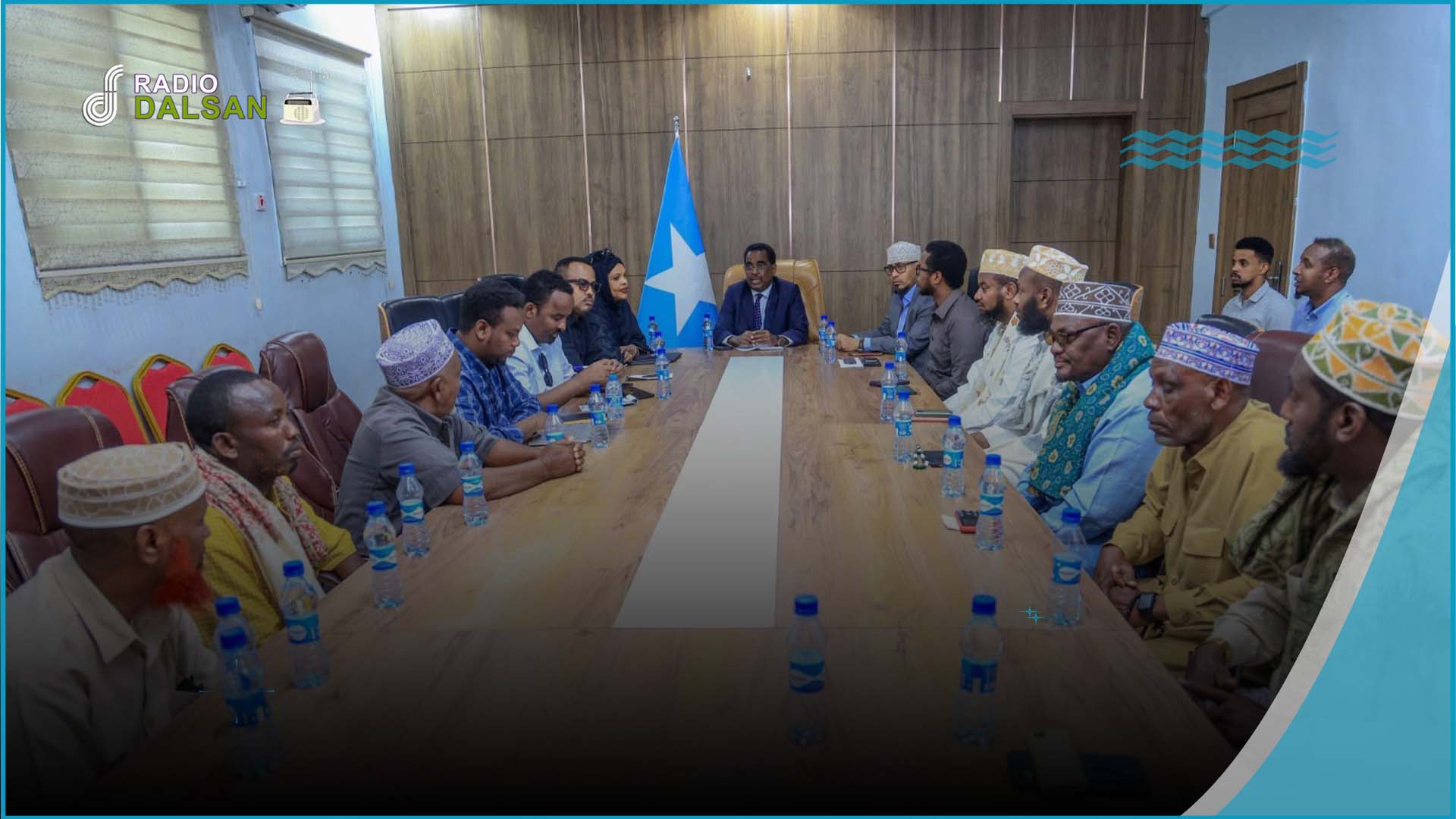Somalia's Interior Minister Engages Clan Leaders in Pivotal Peace Talks

MOGADISHU,– In a significant move to address local conflicts and foster national cohesion, Somalia's Minister of Interior, Federal Affairs, and Reconciliation, His Excellency Ali Yusuf Ali Hosh, has convened high-level talks with traditional elders and political leaders from the Gaaljecel and Digil-Mirifle (Fifth Clan) communities.
The meeting, which also included high-ranking government officials, focused on de-escalating violence and charting a sustainable path toward reconciliation in areas strained by inter-clan tensions.
The talks were led by His Excellency Ali Yusuf Ali Hosh, the federal minister responsible for the critical portfolios of internal security and national reconciliation. He was joined by a high-level delegation, including the State Minister for Interior, His Excellency Sadad Aliyo, and the Director General of the ministry, Aidarus Moallim Hassan. Their counterparts in the discussions were influential traditional elders and political figures from the Gaaljecel and Digil-Mirifle clans, representing the grassroots voices of their communities.
The discussions centered on three core, interconnected issues:
- The Security Situation: A direct assessment of the conditions in regions recently affected by clashes between the communities.
- Reconciliation Efforts: A review of the ongoing peace processes and confidence-building measures.
- Conflict Resolution: Exploring concrete methods to address the root causes of the tensions, which often involve competition over resources, land, and political representation, with the ultimate goal of achieving a lasting peace.
While the meeting was held in the capital, its focus was on the specific districts and regions in the federal member states—particularly those within the Hirshabelle and South West states—where the Gaaljecel and Digil-Mirifle clans coexist and where conflicts have recently flared. These localized disputes are a primary source of instability in the country.
Persistent inter-clan conflict remains one of the most significant obstacles to Somalia's stability. It diverts security resources, undermines governance, creates humanitarian crises, and can be exploited by extremist groups like Al-Shabaab. By engaging directly with traditional elders, who hold immense moral and social authority, the federal government is leveraging a time-honored Somali institution to resolve disputes that cannot be settled by military or political means alone.
This meeting is a tactical implementation of the ministry's broader mandate for national reconciliation. It reflects a "bottom-up" approach to peacebuilding, complementing the "top-down" political negotiations between the federal government and regional states. Resolving these specific clan conflicts is essential for creating a stable environment necessary for broader state-building, economic development, and the ongoing national offensive against extremist militias.
In Somalia, clan identity forms the bedrock of social and political life. Despite the progress in forming a federal government, inter-clan rivalries over power, water, and grazing land continue to be a major driver of violence. The Digil-Mirifle clan federation is a major community in the southern Bay and Bakool regions, while the Gaaljecel are also a significant group, making peace between them critical for regional stability.
The high-level dialogue convened by Minister Hosh represents a crucial, ground-level step in Somalia's arduous journey toward lasting peace. By bringing conflicting parties to the table and focusing on the underlying grievances, the Federal Government of Somalia is working to mend the very fabric of its society. The success of such targeted reconciliation efforts is not merely a matter of local peace; it is a fundamental prerequisite for the nation's overall security, unity, and prosperity. The international community, which heavily backs the Somali government, watches these internal peace processes closely, as their success is a key indicator of the nation's long-term viability.




Image
